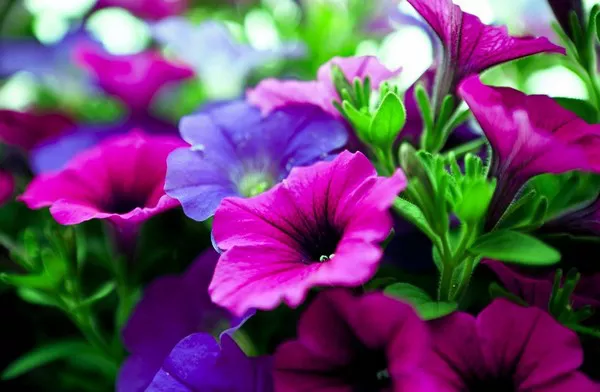Flowers are not only admired for their beauty and fragrance but also serve as a symbol of love, celebration, and remembrance. However, like any organic matter, flowers can be susceptible to various issues, one of which is mold growth.
Understanding the Vulnerability of Flowers
Flowers are organic structures composed of delicate tissues, including petals, stems, and leaves. As organic matter, they are prone to various forms of deterioration, and mold is one of the most common issues that can affect their longevity. Mold is a type of fungus that thrives in conditions with high moisture and humidity levels, making flowers particularly susceptible to mold growth.
Causes of Mold Growth in Flowers
Moisture: Mold requires moisture to grow, and flowers naturally contain water. When you place cut flowers in a vase or bouquet, they remain in a wet environment, creating a favorable condition for mold spores to germinate and multiply.
Inadequate Air Circulation: Flowers that are densely packed in arrangements with limited air circulation are more likely to retain moisture, promoting mold growth. Stagnant air allows humidity to accumulate around the flowers, which can lead to mold development.
Age and Quality of Flowers: Older or lower-quality flowers are more susceptible to mold. As flowers age, they become more fragile and are less capable of resisting mold spore invasion.
Contaminated Water: The water used to nourish cut flowers can be a source of mold contamination. If the water is not clean or if there are mold spores present, it can expedite the mold growth process.
Environmental Factors: The environment in which the flowers are displayed or stored plays a significant role. High humidity levels, warm temperatures, and poor ventilation can contribute to mold development.
Preventing Mold Growth in Flowers
While flowers are vulnerable to mold, there are steps you can take to prevent it and extend the lifespan of your floral arrangements.
Use Clean Vases: Always start with a clean vase, free from any mold spores or residue. Wash vases with warm, soapy water, and rinse thoroughly before adding fresh flowers.
Cut Stems at an Angle: When arranging cut flowers, trim the stems at a 45-degree angle. This not only allows the flowers to absorb water more effectively but also prevents the cut ends from resting flat at the bottom of the vase, potentially trapping moisture.
Change the Water Regularly: To minimize the risk of mold growth, change the water in the vase every 2-3 days. Use room temperature water, and avoid using water that has been standing for an extended period.
Remove Fallen Petals and Leaves: As flowers age, petals and leaves may naturally fall. Remove them promptly from the arrangement to prevent mold growth on decaying organic matter.
Proper Ventilation: Ensure that the area where the flowers are displayed has adequate ventilation. Good air circulation helps to reduce humidity and minimize the conditions that encourage mold growth.
Keep Flowers Dry: Avoid getting water on the petals and foliage when watering the flowers. Excess moisture on the flowers can make them more susceptible to mold.
Store Flowers in a Cool Location: If you’re not displaying the flowers immediately, store them in a cool, dry place until you’re ready to arrange them. Avoid storing flowers in overly humid or hot environments.
Addressing Mold on Flowers
Despite best efforts, there may be instances when mold develops on flowers. It’s crucial to address this issue promptly to salvage the remaining bouquet and prevent further damage.
Isolate Affected Flowers: If you notice mold on a few flowers in your arrangement, remove them immediately to prevent the mold from spreading to the healthy ones.
Prune Affected Areas: For flowers with localized mold growth, carefully prune the affected petals or leaves. Dispose of the trimmed portions in sealed plastic bags to prevent the spread of mold spores.
Change the Water and Clean the Vase: After removing the affected flowers and parts, change the water, wash the vase, and ensure it is thoroughly dry before returning the healthy flowers.
Inspect Nearby Flowers: Examine the remaining flowers for signs of mold growth and repeat the pruning and cleaning process if necessary.
Consider Anti-Mold Solutions: Some florists offer anti-mold solutions that can be added to the vase water. These solutions contain chemicals or additives that help inhibit mold growth.
Decrease Humidity: If the flowers are in a particularly humid environment, consider relocating them to a drier area with better air circulation.
Refrigeration: For longer-lasting cut flowers, consider storing them in the refrigerator during the night. This can help slow down the aging process and inhibit mold growth.
Professional Floral Care
When dealing with valuable or special occasion flowers, it can be beneficial to seek professional floral care services. Experienced florists can provide advice on proper care, as well as services such as conditioning the flowers, which involves removing excess foliage and treating the stems to maximize vase life.
Choosing Mold-Resistant Flowers
If you frequently encounter mold issues with your cut flowers, you may want to consider selecting flowers that are less susceptible to mold. Some varieties are naturally more resistant due to their structure and petal density. Carnations, roses, and orchids are examples of flowers known for their resilience against mold. Additionally, succulents and air plants are excellent alternatives for those seeking low-maintenance and mold-resistant options.
Conclusion
Flowers, while stunning and fragrant, can indeed mold under the right conditions. Mold growth is a common concern when it comes to preserving the beauty and freshness of floral arrangements. However, by understanding the causes, prevention strategies, and how to address mold issues, you can enjoy your flowers for longer periods and keep mold at bay. Whether you’re a seasoned floral enthusiast or simply enjoy the occasional bouquet, these insights will help you maintain the allure of your flowers and appreciate their natural beauty to the fullest.


